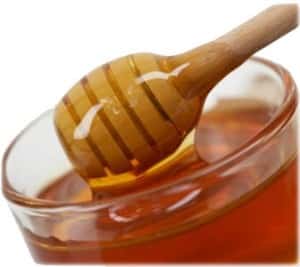Historically, honey has been used by humans to treat a variety of ailments through topical application, but only recently have the antiseptic and antibacterial properties of honey been chemically explained. Hydrogen peroxide is formed in a slow-release manner by the enzyme glucose oxidase present in honey. It becomes active only when honey is diluted, requires oxygen; Also, the antioxidant constituents in honey help clean up oxygen free radicals present.
Gram (+)/ Gram (-) [BOTH CONTAIN DOUBE MEMBRANE] 
Gram positive
Appearance after stain: blue to purple
Structure: Has thick layer of peptidoglycan over inner cytoplasmic membrane. Stain binds to peptidogylcan ; Lack LPS-lipopolysaccharides.
Gram negative
Appearance after stain: pink to red
Structure: In gram negative bacteria the peptidoglycan layer is thinner and is located between space of the outer and inner cytoplasmic membrane (LPS covering it); hence the purple die is not taken up by peptidoglycan. Cell wall contains LPS which make them virulent
Honey Types
Manuka [from new Zealand]
Only 10 percent of all Manuka Honey is claimed to have antibacterial properties because of its non-hydrogen peroxide antibacterial content which is known as NPA (Non-Peroxide Activity) Manuka honey.
Ulmo [from Chile]
Chilean honey made by Apis mellifera (honeybee) originating from the Ulmo tree (Eucryphia cordifolia).
